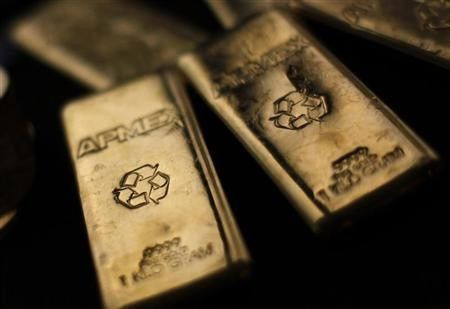Scientists Discover New Gold Structure That Forms In Extreme States

Gold is popularly used in jewelry being the most malleable and ductile of all metals, but it also has important uses in high pressure experiments because its crystalline structure tends to remain stable at incredibly high pressures.
When gold is compressed slowly at room temperature, its face-centered cubic (fcc) structure remains stable at pressures up to three times that of the core of the Earth.
This makes gold ideal for use in experiments with diamond anvil cells, high-pressure devices used in lab experiments.
New experiments, however, revealed that when gold is compressed rapidly, something unexpected occurs. The rapid changes alter the crystalline structure of gold.
Richard Briggs, from Lawrence Livermore National Laboratory, and colleagues discovered that rapid compression at 223 GPa (gigapascals) causes gold to morph itself into a into a less tightly-packed "body centered cubic" (bcc) structure. 223 GPa is about 2.2 million times Earth's atmospheric pressure.
Bcc is also a cubic structure with one atom on each of its corners, but unlike fcc where atoms are found on each of the faces of the cube, bcc has one just in its center. Many metals including lithium, sodium, tungsten and chromium have a bcc structure.
"We discovered a new structure in gold that exists at extreme states—two thirds of the pressure found at the center of Earth," Briggs said.
"The new structure actually has less efficient packing at higher pressures than the starting structure, which was surprising considering the vast amount of theoretical predictions that pointed to more tightly packed structures that should exist."
Physicists have long known about the shift between fcc and bcc in metal works but this change in phase has not been previously observed in gold.
“We probe high-pressure and high-temperature conditions on the shock Hugoniot and observe fcc Au at 169 GPa and the first evidence of body-centered cubic (bcc) Au at 223 GPa,” Briggs and colleagues wrote in their study, which was published in Physical Review Letters.
The researchers, however, observed that while the structure of gold starts to change at 220 GPa, gold began to melt when compressed beyond 250 GPa.
“Upon further compression, the bcc phase is observed in coexistence with liquid scattering as the Hugoniot crosses the Au melt curve before 322 GPa.”
© Copyright IBTimes 2024. All rights reserved.





















